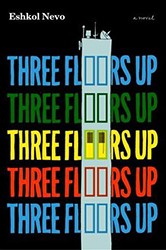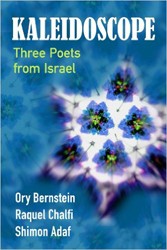The one character who has no name in Amos Oz’s meta-fictional novella is also the only one who is real. He is simply called the Author, and in an extended interior monologue he imagines the lives and personalities of some three dozen people. He turns people he meets into invented characters, creates other people to populate their lives, and watches as they cross paths in his fictive world.
As in so much of Oz’s work, a passion for women animates the plot. An extended seduction sets the course for the Author’s perambulations and his meditations on his characters’ lives. But his deeper subject is the process, effect, and outcome of creative writing. An offstage presence throughout this story is a poet named Tsefania Beit-Halachmi, once so popular that he wrote a weekly newspaper column but now forgotten. His best-known collection, “Rhyming Life and Death,” gives Oz’s book its title. The quatrains quoted rely largely on comforting, optimistic platitudes, in contrast to the Author’s imaginative sympathies with the mixed multitude of humanity. The transitory fame and enduring obscurity of the poet are an object lesson in one kind of relationship between popularity and art.
Lessons aside, Oz’s cast of characters is vastly entertaining. Their histories recapitulate Israel’s own past, and their personalities ring utterly true. This new work is only the latest reason that Amos Oz stands in the front rank of the writers of the world.
Interview
Bob Goldfarb spoke with Amos Oz on behalf of Jewish Book World at Oz’s home in Arad, Israel in March 2009.
Bob Goldfarb: In your acceptance speech for the Goethe Prize in 2005 you talked about the “secret pleasure of imagining the other.” Rhyming Life and Death, your latest book to be published in America, seems to exemplify that pleasure. Was it on your mind when you were at the Goethe Prize ceremony?
Amos Oz: Yes, I was working on that book at that time, and it was very much on my mind. It’s a playful book. It’s a book about a transformation of everyday life into art, which is a strange experience. I never know which kind of encounter, which kind of overheard conversation, which kind of casual glance at people will eventually yield some literary results. The literary result is often not direct: I don’t take snapshots.
BG: Do some of your friends — let’s say, people you lived with intimately on the kibbutz — see themselves in your characters?
AO: There were no complaints in all the years I lived on the kibbutz and wrote about it. I was careful not to use real-life models, or else I wouldn’t be able to live there.
BG: That seems to be related to your wider outlook of treating human beings as of ultimate importance.
AO: Human beings are more important than the claims of art. Human beings are the purpose of my life. That’s what I live for: I live for human beings.
BG: You talk in your memoirs, A Tale of Love and Darkness, about sitting in a café when you were twelve years old and seeing two older women. You imagined who they were and their relationship to each other. Have you been doing this all your life?
AO: Ever since I was a little boy. It all began with ice cream. When my parents went to see their friends in cafes in Jerusalem, and took me with them, they promised me a bribe — that I’ll get ice cream if I shut up for the whole duration of their conversation with their friends. And the conversation with their friends took something like 77 hours, or so it struck me. So I had to keep myself busy, and I taught myself to spy on the other guests in the café. I was overhearing snatches of conversation, looking at people, looking very carefully at their shoes — shoes always tell me a story — and looking at their body language, watching what they order, how they relate to each other, and guessing who they are. Where do they come from, what do their homes look like, what are they to each other? And that was a wonderful pastime because it never bored me. There were always people coming and going, and more stories. And you get ice cream in the end.
BG: Was there a time when you were young when you assumed everyone did this?
AO: Yes, I thought this secret pleasure which is so wonderful is probably something that everybody does. But quite quickly I realized that most people are not that curious. And it’s a shame. I think curiosity is not only a blessing, not only a virtue, it’s a moral virtue. It’s an ethical virtue. Because being curious — meaning, putting yourself in other people’s shoes, or even under other people’s skins, imagining them as they are — makes it very difficult to hate them, when we imagine them from within.
BG: This interest in people, this curiosity, also entails imagination. Not everyone can connect the things they see in a way that tells a story.
AO: Imagination is another blessing. Curiosity and imagination combined are the faculties of the artist. I believe every one of us is blessed with imagination. The question is, do we use it? How much do we exercise it? If we don’t, it may fade away.
BG: Does that suggest that, at some point, some people no longer use their imagination?
AO: Yes, I think some people waste their imagination and waste their curiosity and become too absorbed in “making it,” whatever “it” may be.
BG: There’s a character in Rhyming Life and Death with the wonderful name Tsefania Beit-Halachmi. He is a writer, but it seems that imagination is not his greatest attribute.
AO: Beit-Halachmi is a mediocre poet, not to say a bad poet, with some flashes of very fresh observation. At moments he rises to something close to Japanese haiku. But most of the time he is about clichés. And he stands in the eyes of the Author who is the protagonist of this book as a warning. He stands as a prediction: your destiny might be the same as his destiny. He is totally forgotten, and you might be totally forgotten.
BG: In the many characters you’ve created you seem to have a special affection for eccentrics, characters who have quirks that may make them unattractive.
AO: I am fascinated by people who are not very attractive. In fact, I write mostly about people who, at least outwardly, are unattractive. They fascinate me as a story-teller, they fascinate me as an observer. And I find the unattractive attractive.
BG: A new book of your stories, Scenes from a Village Life, recently appeared in Hebrew but is not yet available in English.
AO: It’s a collection of short stories, all of them set in the same fictitious village. Two of them were published in magazines — in The New Yorker, actually — in the last couple of years. The eight stories are interrelated because characters move from one story to another. So it reads almost like a novel. It’s about an old village, more than a hundred years old, which in some ways is decaying and declining. In some other ways, it’s about people who are searching for something they have lost in the past. Perhaps they are looking for something they have hidden from themselves.
Bob Goldfarb is President Emeritus of Jewish Creativity International.



